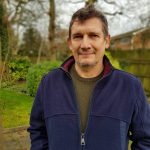
Achaladeva
Chairman
I fell in love with Guhyaloka on my first visit in 1993 – the silence, the forest, the beautiful views. After being ordained here in 1995, and doing a number of solitary retreats, I joined the community in 2006, working on maintenance, land management and some building projects, including being involved in the purchase and development of Uttaraloka. I left the community in 2013, but kept returning to help out when I could. When Vajrasiddhi decided to leave in early 2022, I had a strong intuitive response that I could come here and take on the chair role, which I started in July 2022. Guhyaloka is a beautiful place and through the many years of practice and ordination retreats, has become a sacred place for many men in the Triratna Order and movement. It is a privilege to be part of the community that looks after and protects this sacred space.
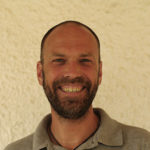
Amoghapala
Office and Development
After leaving Brussels in August 2019 to participate in the Dharma Life Course in Adhisthana, I decided to join the community of Guhyaloka in January 2020 in order to work on maintenance of the centre. Guhyaloka is a magnificent and peaceful place which gives me time and space to deepen my practice of the Dharma.
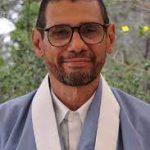
Achalamati
Maintenance
Living in Guhyaloka since July 2022
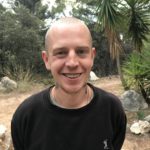
Amalakirti
Solitary CabinsI first got involved with Triratna after doing some basic meditation in a CBT course with the NHS. Then I started going to the Triratna Group in Eastbourne. I became a Mitra in 2018 and asked for ordination shortly after. I volunteered at Evolution Arts in Brighton for two years, then in October 2020 I got a chance to come to Guhyaloka and thought it would be an excellent place to deepen my practice.
I was ordained in 2023.
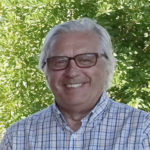
Manjuvajra
Treasurer and Uttaraloka CaretakerAfter almost fifty years of teaching and developing Triratna in Europe and the USA, I have ‘retired’ to Uttaraloka to explore the ‘forest life’ and support the facilities for others to join me.
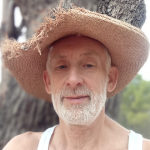
Vajranatha
Field work and everything that comes upI came to Guhyaloka for the first time in 1986 and was immediately inspired by this place.
After spending many years in Venezuela, I joined the community here for a year in 1999. I have done many retreats here and associate this valley with a sense of spiritual renewal.
I came back here in August 2020 and since then I have been taking care of the almond and olive terraces and other small tasks to help with the general maintenance of our facilities.
The Guhyaloka Community was founded soon after the purchase of the property in 1986. At first it was a band of volunteers working under a very tight budget and difficult physical conditions to make El Morer and Bhante’s Bungalow habitable, and to build, from scratch, the retreat facilities for the following year’s Ordination Course. It was a deeply challenging time, but the work was completed on time and the first Course went ahead as planned. Since then there has always been a residential support community which is responsible for the maintenance and development of the facilities, including over twenty buildings and 60 hectares (150 acres) of wild forest with some cultivated terraces of almonds and olives. They also service the ordination courses and other retreats, look after those on solitary retreat, providing them with food and other support, and transporting everyone in and out of the valley. Although the hope is to have a minimum of six men living at Guhyaloka there are often only four or five – so it is a fairly demanding life but even so the community members manage to keep up an active spiritual life of meditation and study.
Community members receive full board and lodging and a small stipend to cover personal expenses as well as medical insurance. The nucleus of the community is ‘Bhante’s Bungalow’ which has a kitchen, a sitting room, an outdoor dining space and a couple of rooms for visitors. Nearby, scattered among the pine trees there are a number of wooden huts; one of which is used as the community shrine room and the others are for personal rooms. During the winter, if it is not in use, the community sometimes decamps to the relatively more comfortable accommodations at the retreat centre. The community follows a daily program of meditation, work, and puja as well as eating meals together, and a few meetings in the evenings for study and community business.
Generally speaking the community is made up of members of the Triratna Buddhist Order or men training to join the Order, and for historical reasons English is the primary language. Many of the community members have been from the UK. However since Britain has left the EU we are hoping that we will become much more internationally diverse. Although it is much more difficult now for British men to live at Guhyaloka for longer than three months we are hoping that after a couple of shorter visits we may be able to work towards obtaining full residency. We are presently (Early 2021) looking for two more men – preferably Order members – to join the community.
One of the original components of Sangharakshita’s vision for Guhyaloka was that it would also house a ‘vihara’ – a small community of men dedicated to spiritual practice with no other responsibilities – and over the decades there have been various manifestations of such a community. There has been a variety of personnel and regimens but they have all had a limited lifetime – although often lasting several years. Uttaraloka represents the latest incarnation of this ideal – albeit an ongoing temporary community – that we are calling a ‘forest hermitage and retreat‘.

Guhyaloka - Triratna Retreat Centre
This is the new page of the Guhyaloka Buddhist Retreat Center in Spain.

